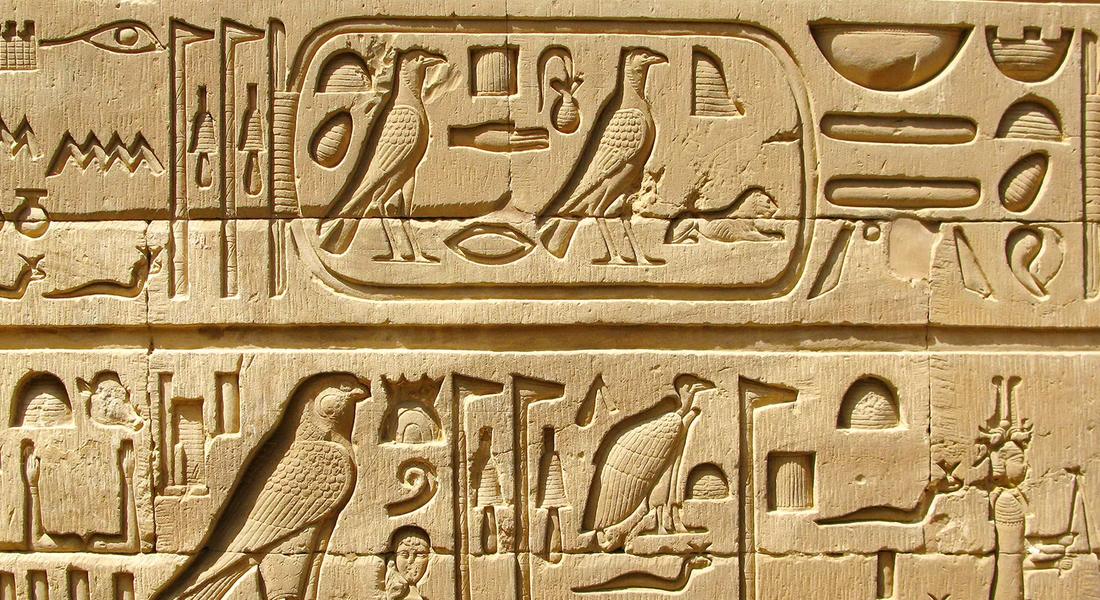Cognitive Benefits of Hieroglyphs
By:
777 7777
On
01/06/2023Reading time:
12 min
Summary:
Cognitive dysfunction, including disorders like Alzheimer's disease, is a growing concern worldwide. In the pursuit of understanding and addressing cognitive decline, the potential effects of hieroglyphs on cognitive health have garnered interest. Hieroglyphic systems, such as those used in various languages, offer unique cognitive challenges that may positively influence brain function. This blog post will delve into the broader implications of hieroglyphs on cognitive dysfunction, considering their potential benefits beyond specific languages like Chinese and Japanese. By exploring relevant research and evidence, we aim to shed light on the cognitive advantages associated with hieroglyphic learning.

How Hieroglyphs Promote Cognitive Stimulation:
Learning and engaging with hieroglyphs can enhance cognitive abilities in several ways.
Here are some scientific backups in which the study of hieroglyphs can enhance cognitive functioning help mitigate the risk of cognitive disorders:
Visual Perception:
Research studies have shown that learning and engaging with visual symbols, such as hieroglyphs, can enhance visual perception skills. A study published in the journal PLOS ONE in 2012 examined the impact of learning to read Chinese characters (which are also visually complex) on visual perception abilities. The study found that learning to read Chinese characters improved visual discrimination skills, leading to enhanced visual perception and sensitivity to visual details. Similar findings can be extrapolated to the study of hieroglyphs, as both involve intricate symbol recognition and visual analysis.Memory and Recall:
Learning hieroglyphs requires the memorization of symbols and their corresponding meanings. Numerous studies have demonstrated the positive effects of memory training on cognitive abilities. For example, a study published in the journal Psychological Science in 2008 investigated the effects of memory training on working memory and fluid intelligence. The study found that individuals who received memory training showed improvements not only in memory performance but also in fluid intelligence measures, such as reasoning and problem-solving abilities.Attention and Concentration:
Engaging with hieroglyphs requires sustained attention and concentration, which can have positive effects on these cognitive abilities. In the journal PLOS ONE in 2013 investigated the effects of attention training on sustained attention and working memory. The study found that participants who received attention training showed improvements in sustained attention and working memory performance compared to a control group.
Research has shown that these activities can lead to an increase in gray matter volume in areas of the brain, such as the occipital lobe, hippocampus and prefrontal cortex. These scientific studies provide insight into the idea that learning hieroglyphs, with its emphasis on visual perception, memory, and sustained attention, can have positive effects on cognitive functioning.

Countries Utilizing Hieroglyphs:
Several countries, such as Japan, China, and Egypt, have a long history of utilizing hieroglyphs in their writing systems. Some of these countries have demonstrated relatively lower rates of cognitive dysfunction compared to regions with different writing systems. While these observations do not establish causation, they provide insights into the potential relationship between hieroglyphic use and cognitive health.
Unlocking the cognitive advantages of hieroglyphs holds promise for addressing cognitive decline. By engaging with intricate symbol recognition and promoting visual perception, memory, and sustained attention, hieroglyphic learning offers a pathway to enhance cognitive functioning and mitigate the risk of cognitive disorders.
Limitations and the Need for Further Research:
It is essential to acknowledge the limitations of the observed correlations between hieroglyphs and cognitive health. Multiple factors, including genetics, lifestyle, and cultural differences, contribute to the overall risk of cognitive dysfunction. Further research is required to establish a definitive cause-and-effect relationship between hieroglyphic learning and cognitive health outcomes.
Conclusion:
Exploring the cognitive effects of hieroglyphs offers an intriguing perspective on addressing cognitive dysfunction. While the focus on specific languages like Chinese and Japanese is noteworthy, a broader examination of hieroglyphic systems reveals the potential cognitive benefits associated with their use. Engaging with hieroglyphs stimulates cognitive processes, enhances neuroplasticity, and may contribute to better cognitive functioning and a potential reduction in the risk of cognitive disorders. Further research is needed to better understand the mechanisms underlying these effects and establish concrete recommendations for promoting cognitive health.
Limitations and the Need for Further Research:
It is essential to acknowledge the limitations of the observed correlations between hieroglyphs and cognitive health. Multiple factors, including genetics, lifestyle, and cultural differences, contribute to the overall risk of cognitive dysfunction. Further research is required to establish a definitive cause-and-effect relationship between hieroglyphic learning and cognitive health outcomes.
Conclusion:
Exploring the cognitive effects of hieroglyphs offers an intriguing perspective on addressing cognitive dysfunction. While the focus on specific languages like Chinese and Japanese is noteworthy, a broader examination of hieroglyphic systems reveals the potential cognitive benefits associated with their use. Engaging with hieroglyphs stimulates cognitive processes, enhances neuroplasticity, and may contribute to better cognitive functioning and a potential reduction in the risk of cognitive disorders. Further research is needed to better understand the mechanisms underlying these effects and establish concrete recommendations for promoting cognitive health.

Tree Gazing Benefits Eyes
777 7777
01.06.2023
Immersing ourselves in nature and taking in the sight of trees can have numerous benefits on our overall well-being, including our eye health. In this article, we will explore the potential advantages of gazing at green objects, specifically trees, and how they can positively impact our eyes. Let's delve into the scientific evidence behind this natural visual experience.

Benefits of Breast Milk vs. Animal Milk and Formula Milk
777 7777
07.06.2023
Breastfeeding is a natural and beautiful process that provides numerous benefits to both infants and their mothers. While breast milk is specifically designed to meet the nutritional needs of human babies, the comparison between breast milk and animal milk often arises.
In this article, we will explore the differences between breast milk and animal milk and shed light on the importance of breastfeeding.

The Role of Sleep in Boosting Immunity
777 7777
01.06.2023
In today's hectic and demanding world, individuals often find themselves burning the midnight oil, working overnight, or sacrificing sleep for various reasons. However, scientific evidence increasingly highlights the crucial role of quality sleep in boosting immunity and maintaining overall health. Adequate sleep can strengthen our body's defense mechanisms, leading to a more robust immune system. This article explores the relationship between sleep and immunity, emphasizing the importance of prioritizing sleep for a stronger, healthier body.
Subscribe to our newsletter
Subscribe to our newsletter and be at the front of everything.